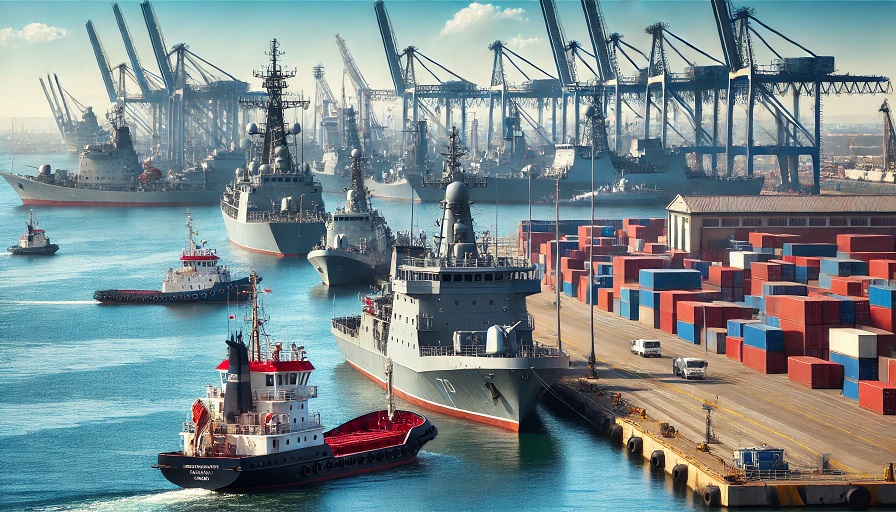Overview of the Market
The Global Marine Vessels Market is forecasted to grow from USD 111.10 billion in 2024 to USD 133.63 billion by 2030, reflecting a CAGR of 3.1%. This growth is fueled by:
- Global Trade Expansion: The demand for efficient transportation of goods continues to rise with expanding international trade.
- Defense Modernization: Many nations are prioritizing naval fleet upgrades to strengthen maritime security.
- Tourism Boom: Increased interest in passenger travel and leisure cruises is driving growth in passenger vessels.
- Sustainability Push: Industry-wide efforts to replace outdated ships with energy-efficient and eco-friendly vessels support market expansion.
Download PDF Brochure @
https://www.marketsandmarkets.com/pdfdownloadNew.asp?id=74199246
Market Segmentation and Growth Drivers
- By Ship Type:
- Commercial Ships Dominate: Cargo vessels, tankers, and container ships form the backbone of global trade.
- Passenger Vessels on the Rise: Ferries and cruise ships are in high demand as tourism flourishes worldwide.
- Military Vessels: Destroyers, frigates, and corvettes are central to fleet modernization plans by leading navies.
- By Tonnage:
- Fastest Growth in 100–500 DWT:
- Smaller vessels such as fishing boats and coastal cargo ships are vital for short-distance transport and regional trade.
- Key for operations in shallow waters, river routes, and areas with limited infrastructure.
- Fastest Growth in 100–500 DWT:
Regional Outlook
- Asia Pacific Leads the Market:
- Dominated by shipbuilding powerhouses China, South Korea, and Japan, the region is pivotal in global maritime trade.
- Rising export-import activity and advancements in energy shipping are fueling demand for larger vessels.
- Naval modernization in countries like India and Australia is adding to the market momentum.
- North America and Europe:
- Investments in naval defense and sustainability-focused vessel replacements are key growth drivers.
- Passenger vessel demand is high due to a strong tourism industry.
Key Industry Trends
- Green Shipping Solutions:
- Adoption of LNG-powered ships and exploration of hydrogen fuel as sustainable alternatives to traditional fuels.
- Compliance with stringent environmental regulations is reshaping ship designs and operations.
- Technological Advancements:
- Smart shipping technologies such as AI, IoT, and automation enhance operational efficiency.
- Innovations in hull designs and propulsion systems improve fuel efficiency and reduce emissions.
- Rising Demand for Specialized Vessels:
- Industries are requiring tailored vessels for specific purposes, such as offshore wind farms, energy transportation, and deep-sea exploration.
Competitive Landscape
Prominent companies driving the market include:
- China State Shipbuilding Corporation (China)
- FINCANTIERI S.p.A. (Italy)
- HD Hyundai Heavy Industries (South Korea)
- Huntington Ingalls Industries (US)
- Samsung Heavy Industries (South Korea)
These firms focus on:
- Advancing fuel efficiency and environmental sustainability.
- Expanding their portfolios to meet the diverse needs of commercial and military segments.
- Strengthening global market presence through innovation and strategic collaborations.
Opportunities in the Market
- Emerging Economies: Developing nations are investing in smaller, versatile vessels for domestic trade and regional connectivity.
- Expanding Tourism: The growing demand for luxury cruise experiences offers significant opportunities in passenger vessel manufacturing.
- Naval Upgrades: Increasing geopolitical tensions drive investments in advanced military fleets worldwide.
Ask for Sample Report @
https://www.marketsandmarkets.com/requestsampleNew.asp?id=74199246
The marine vessels market is poised for steady growth, driven by evolving trade, defense, and tourism needs. Regions like Asia Pacific and North America are at the forefront, with a strong focus on innovation, sustainability, and technology. Industry players must continue to align with these trends to capitalize on emerging opportunities and sustain long-term growth.

